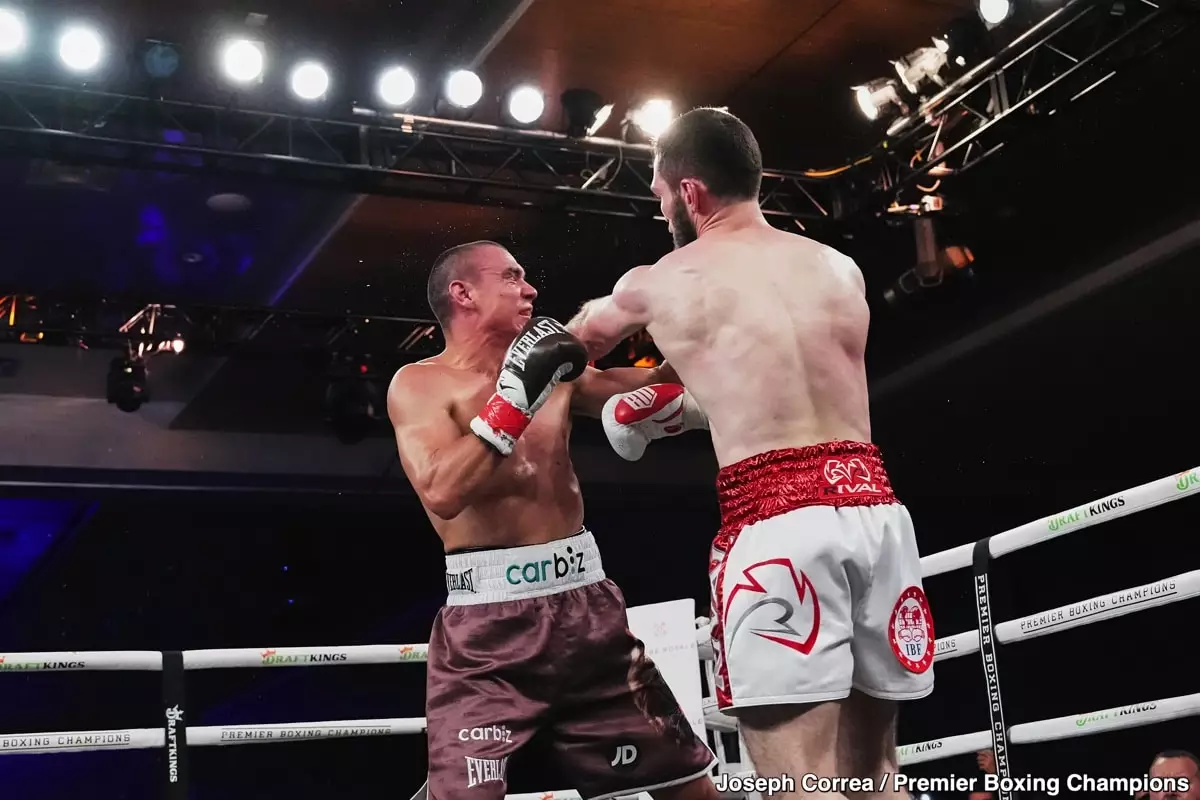The discussion surrounding boxing matches often extends beyond the mere prediction of outcomes; it encapsulates intricate analyses of fighters’ styles, their histories, and their potential matchups. In the case of Terence Crawford, a veteran fighter with an impeccable record, and Bakhram Murtazaliev, an emerging force in the junior middleweight division, the debate forms a nuanced picture that begs further exploration. Recent critiques from Crawford’s teammate, Steven Nelson, bring to light key elements that influence both perception and the potential for future matchups.
Critique of Style and Experience—A Diverging Perspective
Steven Nelson has voiced significant skepticism regarding Bakhram Murtazaliev’s capabilities as a formidable opponent for Crawford. He labels Murtazaliev’s approach to boxing as “basic,” claiming that the IBF junior middleweight champion does not offer anything that Crawford hasn’t already encountered in previous fights. In contrast, Nelson rates Israil Madrimov—who gave Crawford a fierce challenge in their closely contested bout—much higher, suggesting that diversity in style can often dictate the outcome in the ring.
Murtazaliev’s unorthodox fighting style appears to be the primary source of concern for those analyzing a hypothetical match against Crawford. With a record showcasing 23 wins (17 KOs), Murtazaliev may project power and toughness, yet Nelson believes that his lack of variability makes him predictable—a crucial development in a sport where strategy reigns supreme. From a tactical point of view, unpredictability is a lethal trait that fighters like Madrimov exemplify, as they can capitalize on their opponents’ weaknesses in surprising ways.
Crawford’s Legacy vs. Murtazaliev’s Potential
The rising tension between Crawford and Murtazaliev is amplified by Crawford’s hesitation to pursue a unification bout against Murtazaliev. Observers have speculated that this reluctance stems from the potential risks associated with facing an opponent whose style could challenge Crawford’s own strengths. The lack of matchup between fighters with distinct characteristics further complicates any likelihood of clarity in predicting an outcome.
Nelson’s assessment of Crawford as “a different beast” speaks to the decorated veteran’s competitive spirit and experience. However, recent performances have hinted at the toll taken by time on Crawford’s abilities. The fight against Madrimov illuminated some vulnerabilities, revealing not only Crawford’s age but also the potential discrepancy in power as he moved up in weight class. Murtazaliev’s capacity to unleash significant punch combinations might present an unwelcome challenge for Crawford should they meet.
Boxing offers an array of styles—from the aggressive to the evasive—and the beauty lies in the adaptability of each fighter. However, as Nelson defaults to evaluating Murtazaliev as “just tough,” he overlooks a critical aspect of boxing: the unpredictability that arises from style collisions. Murtazaliev’s left hook and capacity to apply pressure can disrupt Crawford’s fluidity, an argument that paints a far more detailed picture than simply labeling him as a basic fighter.
In evaluating Crawford’s possible strategies against Murtazaliev, it is evident that playing it safe might be the best avenue. The likelihood of a judges’ decision favoring Crawford due to movement can only hold water if he can effectively mitigate Murtazaliev’s diverse offensive arsenal. The contemplation of a 12-round bout against someone like Murtazaliev is laden with inherent risks—opting for a tactical retreat might prove fatal if the opponent possesses superior power and aggression.
Much of Nelson’s commentary revolves around the theme of legacy—a driving force for many seasoned boxers. Crawford’s focus on constructing a Hall of Fame-worthy career undoubtedly shapes his decisions within the ring. However, the demands of legacy must harmoniously coincide with strategic decision-making; reckless engagements can obscure achievements rather than bolster them.
As discussions surrounding Crawford and Murtazaliev continue, one thing remains clear: the Coalition of styles showcases boxing’s true beauty. In an era where diversification in technique and adaptability are paramount for success, the dance between a proven champion and an emerging talent promises to captivate fans while sparking intense discussions regarding their respective journeys and capabilities. The boxing community must remain watchful as both fighters draw ever closer to what could potentially be a defining bout, where styles clash and legacies are put on the line.

